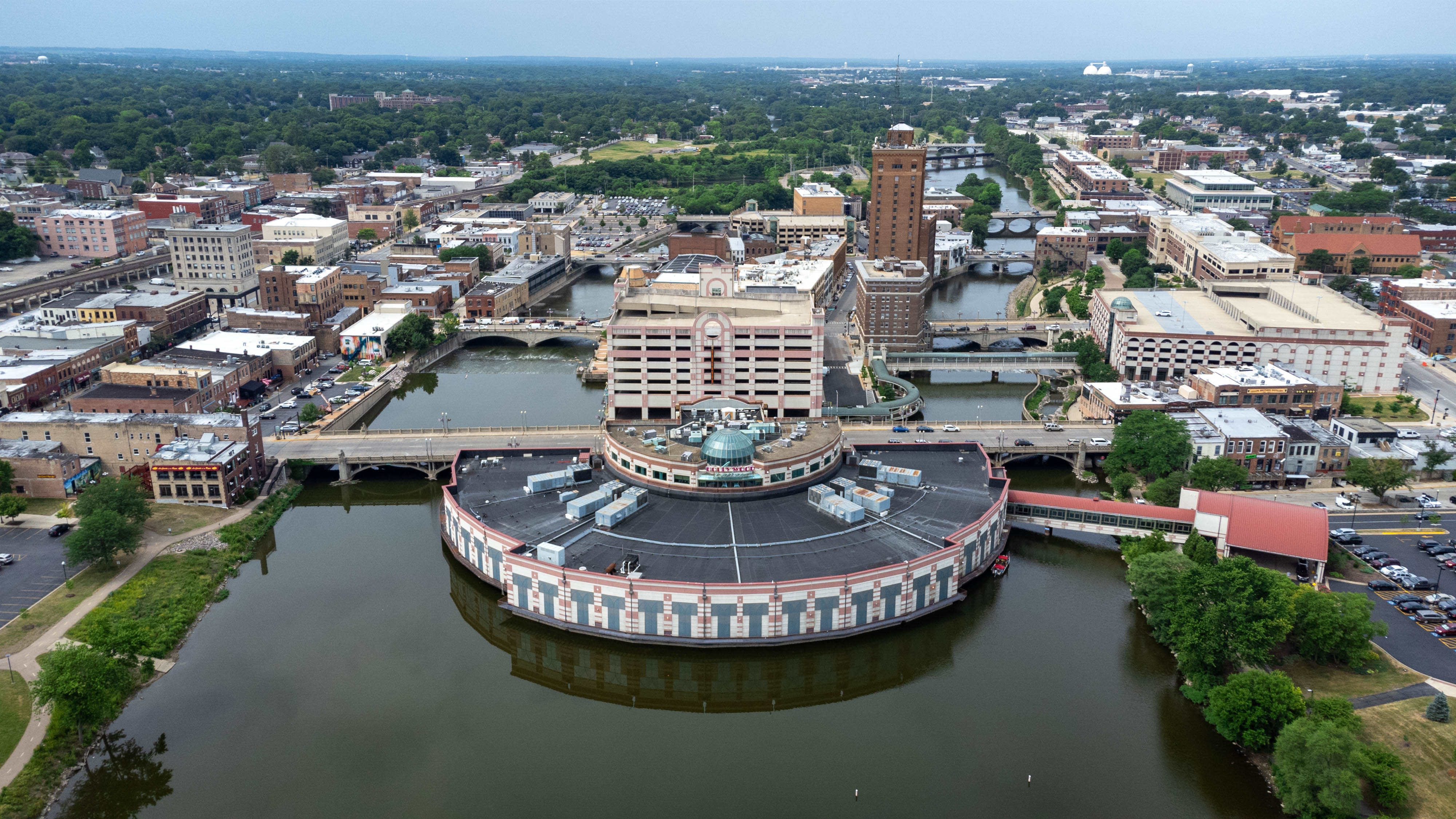






Please add profiles of those who were born, lived or died in Aurora, Illinois.
History
Aurora is a suburb of Chicago and is located in DuPage, Kendall, Kane and Will counties. It's nickname is "City of Lights" because it was one of the first American cities to have electric street lights.
The Aurora area has some significant architecture, including structures by Frank Lloyd Wright, Ludwig Mies van der Rohe, Bruce Goff and George Grant Elmslie. Aurora is also home to a large collection of Sears Catalog Homes (over 50 homes) and Lustron all-steel homes (seven homes).
Aurora was originally two villages: East Aurora, incorporated in 1845, on the east side of the river, and West Aurora, formally organized on the west side of the river in 1854. In 1857, the two towns joined officially, incorporated as the city of Aurora. As representatives could not agree which side of the river should house the public buildings, most public buildings were built on or around Stolp Island in the middle of the river.
As the city grew, it attracted numerous factories and jobs. In 1856, the Chicago, Burlington and Quincy Railroad located its roundhouse and locomotive shop in Aurora, becoming the town's largest employer, a rank it held until the 1960s. Railroad restructuring in the railroad industry resulted in a loss of jobs as the number of railroads reduced and they dropped lines for passenger traffic. Aurora at one time had regularly scheduled passenger trains to Chicago.
The heavy industries on the East side provided employment for generations of European immigrants, who came from Ireland, Great Britain, Scandinavia, Luxembourg, Germany, France, and Italy. Aurora became the economic center of the Fox Valley region. The combination of these three factors—a highly industrialized town, a sizable river that divided it, and the Burlington railroad's shops—accounted for much of the dynamics of Aurora's political, economic, and social history. The city openly supported abolitionism before the American Civil War. Mexican migrants began arriving after the Mexican Revolution of 1910. Socially, the town was progressive in its attitude toward education, religion, welfare, and women. The first free public school district in Illinois was established in 1851 here and the city established a high school for girls in 1855.
The city developed as a manufacturing powerhouse and continued until the early 1970s, when the railroad shops closed. Soon many other factories and industrial areas relocated or went out of business. By 1980, there were few industrial areas operating in the city, and unemployment soared to 16%. During the late 1970s and early 1980s, development began of the Far East side along the Eola Road and Route 59 areas. While this was financially beneficial to the city, it drew off retail businesses and manufacturing from downtown and the industrial sectors of the near East and West Sides, respectively, weakening them. In the mid-1980s crime rates soared and street gangs started to form.
During this time Aurora became a much more culturally diverse city. The Latino population began to grow rapidly in the city in the 1980s. In the late 1980s, several business and industrial parks were established on the city's outskirts. In 1993, the Hollywood Casino was built downtown, which helped bring the first redevelopment to the downtown area in nearly twenty years. In the late 1990s, more development began in the rural areas and towns outside Aurora. Subdivisions sprouted up around the city, and Aurora's population soared.
On September 26, 2014, a fire at an air traffic control edifice in Aurora (also known as the "Chicago Center") caused nearly 2000 airline flights to be grounded. Brian Howard, an employee of Harris Corporation, was charged in the incident.
At approximately 1:30 PM on February 15, 2019, police responded to an active shooter situation in west Aurora to find that 45-year-old Gary Martin had opened fire on fellow employees at the Henry Pratt Company after being terminated from the company. Five officers and several civilians were injured in the ensuing standoff, after which police entered the building and neutralized Martin. In total, the incident left six dead (including the gunman) and numerous others wounded. It was the first major shooting in the town's history.
Cemeteries
Links
The Chicago, Burlington & Quincy Railroad
The 2019 Aurora, Illinois Shooting
